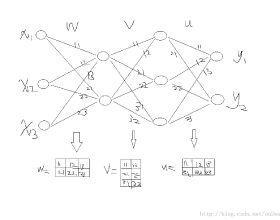Animal behaviour depends on learning to associate sensory stimuli with the desired motor command. Understanding how the brain orchestrates the necessary synaptic modifications across different brain areas has remained a longstanding puzzle. Here, we introduce a multi-area neuronal network model in which synaptic plasticity continuously adapts the network towards a global desired output. In this model synaptic learning is driven by a local dendritic prediction error that arises from a failure to predict the top-down input given the bottom-up activities. Such errors occur at apical dendrites of pyramidal neurons where both long-range excitatory feedback and local inhibitory predictions are integrated. When local inhibition fails to match excitatory feedback an error occurs which triggers plasticity at bottom-up synapses at basal dendrites of the same pyramidal neurons. We demonstrate the learning capabilities of the model in a number of tasks and show that it approximates the classical error backpropagation algorithm. Finally, complementing this cortical circuit with a disinhibitory mechanism enables attention-like stimulus denoising and generation. Our framework makes several experimental predictions on the function of dendritic integration and cortical microcircuits, is consistent with recent observations of cross-area learning, and suggests a biological implementation of deep learning.
翻译:动物行为取决于学习将感官刺激与理想的运动指令联系起来。 了解大脑如何在不同的大脑地区协调必要的合成修改, 仍是一个长期的谜题。 在这里, 我们引入了一个多区域神经网络模型, 合成塑料性塑料在其中不断将网络调整到一个全球想要的产出。 在这个模型合成学习中, 由本地不预测自下而上的投入而导致的登地性预测错误驱动。 这种错误发生在金字塔神经的恶性下方, 长期的激素反馈和地方抑制性预测被整合在一起。 当局部抑制无法匹配刺激性反馈时, 出现一个错误, 触发了全球期望产出的网络。 在这种模型的突触性学习过程中, 我们展示了模型在一些任务中学习能力, 并显示它与经典错误的反正反正反向演算法相匹配。 最后, 补充这种螺旋电路, 使注意力相似的刺激性回溯性反馈和局部抑制性预测得以匹配。 我们的一些实验框架显示, 最近的深度演化和深度演化过程的演化过程是连续进行。



